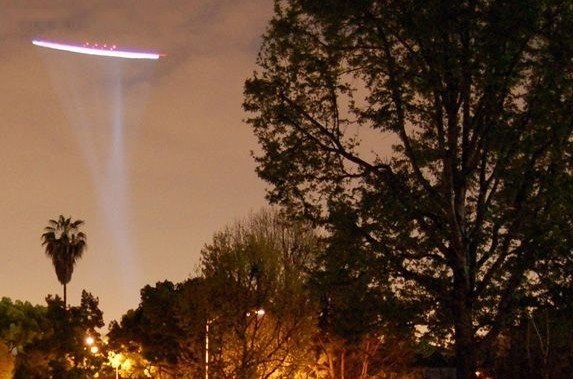
Photo: A "UFO" spotted over an airport in Hangzhou in 2010
By Eric Fish
May 16, 2013
On Monday (May 13) a series of “UFO” photos emerged after people in several Chinese cities reported seeing a strange light in the sky.
This was just the latest in a wave of UFO sightings that have happened throughout the country in recent years. So after a relatively quiet 5,000-year history in the field, why are UFOs all-of-a-sudden becoming so common in China?
In 1947, three highly-publicized UFO sightings happened in the United States within a two-week span culminating with the Roswell Incident, where some alleged that the U.S. government had recovered and hidden an alien ship wreck. In the years that followed, hundreds more sightings were reported, official inquiries were launched and the idea of alien visitors captured America’s imagination.
The conditions that existed in America at the time may help explain the influx of UFOs in China.
When UFO sightings are investigated, they’re usually found to have been one of four things:
1. Something that’s easily explained (ie – a weather balloon, airplane, science experiment or natural phenomenon)
2. A military test
3. A hoax
4. A genuine unidentified flying object that nobody can explain, meaning the possibility of an extraterrestrial origin can’t be ruled out.
According to famous theoretical physicist Michio Kaku, 95 percent of all UFO sightings fall into the first three categories. “It’s the 5 percent that give you the willies,” he said in an interview with MSNBC. These tend to be cases where several credible witnesses using multiple mediums (like eyesight and radar) see something inexplicable through our understanding of physics and human technology.
For post-1947 America, each of the four possible UFO explanations had fertile ground. It was right after the end of World War II when the U.S. found itself with a stockpile of leftover military aircraft. Many of these planes were repurposed for carrying paying passengers, giving rise to a boom in commercial flight and filling America’s skies with lights that people had never seen before.
This period was also the beginning of the Cold War, when the U.S. military was testing all sorts of new airborne technology while remaining hyper-sensitive about its secrecy. Many UFO sightings turned out to be military-related operations yet unknown to the greater public and unacknowledged by the U.S. government.
With the press sensationalizing UFO encounters during this time, plenty were primed to assume the lights they saw in the sky were from alien worlds; not to mention all of the hoaxsters and fame-seekers who emerged to capitalize on and perpetuate the UFO craze.
But perhaps the most intriguing aspect of the American UFO avalanche was the idea that there were actually alien visitors; and that naturally, they took a keen interest in the emerging superpower and its development of planet destroying nuclear technology.
Now look back to modern China. Its economic development has meant, in one form or another, more lights in the sky. The UFO sighting this week, for example, now appears to have been a rocket science experiment conducted by the National Space Science Center. Likewise, in 2012, witnesses reported hundreds of mysterious flying objects on the Sino-Indian border that were likely just festive floating lanterns.
But there have been other flying objects documented that remain much more mysterious.
2010 may have been to China what 1947 was to the U.S. In July that year, flights were grounded in Hangzhou when a mysterious object was seen floating above Xiaoshan Airport. Some experts speculated that it was a military aircraft and officials later said it was just an illegal private flight. But those explanations didn’t satisfy many who’d seen the strange photographs.
A week later, a UFO was seen hovering over Chongqing for more than an hour. That also has yet to be explained (and this wasn’t the first UFO sighting in Chongqing, or the last).
Then that September, another airport was shut down when a flying object was seen hovering in Baotou, Inner Mongolia. Again, it vanished after about an hour. There was a subsequent investigation, but the results reportedly couldn’t be disclosed because there was a “military connection.” In 2010, there were altogether eight major UFO sightings reported.
With all these incidents, and a media that’s shown no hesitation in covering them, China is well on the way to developing its own American-style UFO craze. According to Global Times, UFO associations around the country now have about 50,000 members altogether.
With this influx of interest and a newfound access to editing technology, a number of Chinese hoaxsters have also jumped on the UFO bandwagon (here and here for example). China even has the variety of witnesses claiming very intimate alien encounters, like the man who says he slept with a 3-meter-tall alien woman with braided leg hair.
But if alien crafts were actually coming to study Earth, China would certainly be an increasingly likely point of focus. With its emergence as a world power and its rapidly growing destructive capability, the China of today in many ways mirrors the America of 1947.
So whether China’s UFO encounters are the result of real aliens or more Earthly phenomena that accompany development, expect more to come.
